Spatial Distribution, Contamination Levels, and Health Risk Assessment of Potentially Toxic Elements in Household Dust in Cairo City, Egypt
- PMID: 36006146
- PMCID: PMC9414935
- DOI: 10.3390/toxics10080466
Spatial Distribution, Contamination Levels, and Health Risk Assessment of Potentially Toxic Elements in Household Dust in Cairo City, Egypt
Abstract
Urban areas’ pollution, which is owing to rapid urbanization and industrialization, is one of the most critical issues in densely populated cities such as Cairo. The concentrations and the spatial distribution of fourteen potentially toxic elements (PTEs) in household dust were investigated in Cairo City, Egypt. PTE exposure and human health risk were assessed using the USEPA’s exposure model and guidelines. The levels of As, Cd, Cr, Cu, Hg, Mo, Ni, Pb, and Zn surpassed the background values. Contamination factor index revealed that contamination levels are in the sequence Cd > Hg > Zn > Pb > Cu > As > Mo > Ni > Cr > Co > V > Mn > Fe > Al. The degree of contamination ranges from considerably to very high pollution. Elevated PTE concentrations in Cairo’s household dust may be due to heavy traffic emissions and industrial activities. The calculated noncarcinogenic risk for adults falls within the safe limit, while those for children exceed that limit in some sites. Cairo residents are at cancer risk owing to prolonged exposure to the indoor dust in their homes. A quick and targeted plan must be implemented to mitigate these risks.
Keywords: Cairo; exposure; indoor dust; pollution; potentially toxic elements; risk assessment; urban.
Conflict of interest statement
The authors declare no conflict of interest. The funders had no role in the design of the study; in the collection, analyses, or interpretation of data; in the writing of the manuscript, or in the decision to publish the results.
Figures
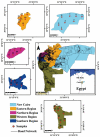
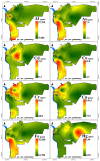

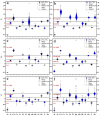


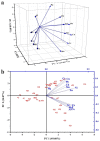
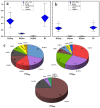
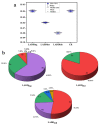

Similar articles
-
Contamination level, spatial distribution, and sources of potentially toxic elements in indoor settled household dusts in Tehran, Iran.Environ Geochem Health. 2024 Jan 25;46(2):56. doi: 10.1007/s10653-023-01838-8. Environ Geochem Health. 2024. PMID: 38270787
-
[Characteristics of Heavy Metal Pollution and Ecological Risk Evaluation of Indoor Dust from Urban and Rural Areas in Taiyuan City During the Heating Season].Huan Jing Ke Xue. 2021 May 8;42(5):2143-2152. doi: 10.13227/j.hjkx.202008045. Huan Jing Ke Xue. 2021. PMID: 33884783 Chinese.
-
Source apportionment and health risk assessment of potentially toxic elements in road dust from urban industrial areas of Ahvaz megacity, Iran.Environ Geochem Health. 2018 Aug;40(4):1187-1208. doi: 10.1007/s10653-017-0035-2. Epub 2017 Oct 28. Environ Geochem Health. 2018. PMID: 29081009
-
Pollution characteristics, sources, and health risk assessment of human exposure to Cu, Zn, Cd and Pb pollution in urban street dust across China between 2009 and 2018.Environ Int. 2019 Jul;128:430-437. doi: 10.1016/j.envint.2019.04.046. Epub 2019 May 10. Environ Int. 2019. PMID: 31082721 Review.
-
Pollution status and human health risk assessments of selected heavy metals in urban dust of 16 cities in Iran.Environ Sci Pollut Res Int. 2020 Jun;27(18):23094-23107. doi: 10.1007/s11356-020-08585-8. Epub 2020 Apr 24. Environ Sci Pollut Res Int. 2020. PMID: 32329009 Review.
Cited by
-
Contamination level, spatial distribution, and sources of potentially toxic elements in indoor settled household dusts in Tehran, Iran.Environ Geochem Health. 2024 Jan 25;46(2):56. doi: 10.1007/s10653-023-01838-8. Environ Geochem Health. 2024. PMID: 38270787
-
Accumulation of Microplastics and Potentially Toxic Elements in Plant Leaves Along an Urbanization Gradient in Bangladesh.Toxics. 2024 Nov 25;12(12):848. doi: 10.3390/toxics12120848. Toxics. 2024. PMID: 39771063 Free PMC article.
-
Potentially Harmful Elements Associated with Dust of Mosques: Pollution Status, Sources, and Human Health Risks.Int J Environ Res Public Health. 2023 Feb 2;20(3):2687. doi: 10.3390/ijerph20032687. Int J Environ Res Public Health. 2023. PMID: 36768064 Free PMC article.
-
Editorial for the Special Issue "Potentially Toxic Elements Pollution in Urban and Suburban Environments".Toxics. 2022 Dec 11;10(12):775. doi: 10.3390/toxics10120775. Toxics. 2022. PMID: 36548608 Free PMC article.
-
Potentially Toxic Element Contamination in Soils Affected by the Antimony Mine Spill in Northwest China.Toxics. 2023 Apr 10;11(4):359. doi: 10.3390/toxics11040359. Toxics. 2023. PMID: 37112586 Free PMC article.
References
-
- Alotaibi M.O., Albedair L.A., Alotaibi N.M., Elobeid M.M., Al-Swadi H.A., Alasmary Z., Ahmad M. Pollution Indexing and Health Risk Assessment of Heavy-Metals-Laden Indoor and Outdoor Dust in Elementary School Environments in Riyadh, Saudi Arabia. Atmosphere. 2022;13:464. doi: 10.3390/atmos13030464. - DOI
-
- Yehia M., Baghdady A., Howari F.M., Awad S., Gad A. Natural radioactivity and groundwater quality assessment in the northern area of the Western Desert of Egypt. J. Hydrol. Reg. Stud. 2017;12:331–344. doi: 10.1016/j.ejrh.2017.06.002. - DOI
-
- Farhat H.I. Impact of Drain Effluent on Surficial Sediments in the Mediterranean Coastal Wetland: Sedimentological Characteristics and Metal Pollution Status at Lake Manzala, Egypt. J. Ocean Univ. China. 2019;18:834–848. doi: 10.1007/s11802-019-3608-0. - DOI
Grants and funding
LinkOut - more resources
Full Text Sources
Research Materials

